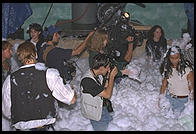
Cleaning Cameras
by Philip Greenspun; revised January 2007
Site Home : Photography : Cleaning Cameras

by Philip Greenspun; revised January 2007
Site Home : Photography : Cleaning Cameras
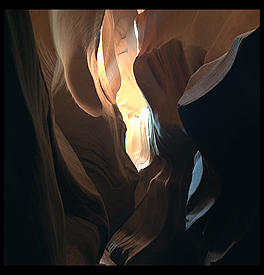
Remember that your camera is just a tool. Don't pamper it. You can always buy a new one. If you leave your camera in a closet, it will never get dirty or broken, but you won't have too many great photographs to show for yourself. Many of the best photographs can only be taken under conditions that will render your equipment wet and/or filthy. That's life.
The photo at right was the result of spending six hours at the bottom of a canyon in the Navajo Nation. For the entire six hours, sand blew down from the top of the canyon and into a $20,000 Rollei 6008 system. Was there a sickening grinding sound when I focussed my $3000 50mm lens for the next few months? Yes. Did I have to send the camera back to Rollei USA to be cleaned? Yes. Did the camera get stolen in Filthadelphia a couple of years later? Yes. So it really didn't make sense to obsess over the camera, did it? We can still enjoy this picture even if that 6008 has disappeared. If the camera had been pampered, it would just be in that much better shape for the crook who is using it now.
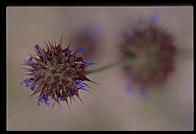
Basic lens cleaning tools are a blower, a microfiber cloth, and lens cleaning fluid (my favorite: Zeiss). Try to blast dust off the lens with the blower or canned air. Finger prints can be removed with a circular wipe of the new miracle micro fiber cloth (my favorite brand is Pentax because it is nice and thick; about $6). Persistent dirt should be removed with lens cleaning fluid, of which the safest is probably Kodak. Always drip the fluid onto the cloth and then wipe the lens; never put fluid directly onto a lens.
Even if your lenses don't look dirty, every few months you should give exposed surfaces a cleaning with Residual Oil Remover (ROR). Even if you were able to protect your optics from all environmental sources of filth, there would still be crud condensing on your optics as camera bag plastics outgas. It is tough to verify ROR's claims, but the optics do look visibly clearer after an ROR treatment and the $4.50 price won't kill you.
If you are going to use an expensive lens in a dusty or wet environment and don't want to obsess over your equipment, keep a B+W UV filter on the lens and count on replacing the filter every year or two.
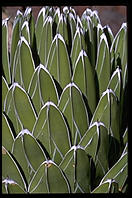
Don't even think about cleaning the mirror in your SLR. Maybe, just maybe, you could consider using a handheld blower to move a few dust specs off, but canned air is too powerful. Technicians clean mirrors with some kind of special viscous fluid and will often do it for free at camera clinics run by shops or conventions. Mirrors have very fragile surfaces and I wouldn't dream of getting near them with a standard lens cleaning solution or cloth.
Remember: the dirt in your viewing system isn't going to show up on film.
Modern TTL flash systems have numerous contacts and if you don't clean them every now and then with a pencil eraser or something, you can be fairly sure of getting intermittent failures.
One of the things that is great about digital SLRs is that you can change the lenses as necessary for different projects. During those lens changes, however, there is a risk of dust falling "onto the sensor." In fact, the CMOS or CCD sensor is covered by a color filter or a clear glass plate, so really the dust has fallen on something that is covering the sensor. Nonetheless, you want to be careful and non-aggressive at this point, because if anything near the sensor is scratched, the camera needs to go in for professional service.
This is the time to get out the owner's manual for your camera. Make sure that the battery is fully charged and then follow the instructions to flip up the mirror for "sensor cleaning mode". If you can't dislodge dust using a simple hand-squeezed blower, consider visiting a camera repair shop. If you're impatient or intrepid, you might want to try a sensor swab wetted with Eclipse fluid (instructions included with the kits).
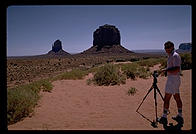
Camera and lens bodies are fairly well sealed against dust and moisture. So you don't really ever have to clean the exteriors of your equipment. On the other hand, if you don't want the dirt and crud that is on the camera body to work its way into your camera bag and from there onto an optical surface, it is probably worth wiping off the body with a soft cloth. Slightly dampening the cloth with plain water certainly won't do any harm, though I imagine that this wouldn't be Canon or Nikon's recommendation.
I had a very interesting experience in New Zealand after smashing a UV filter on my Nikon 28AF lens.
Here are some photos that I wouldn't have gotten if I'd been prissy about my cameras...
From Samantha ...
And from Italy ...
If you got the picture but lost the camera in the process, you may need to visit one of the recommended retailers.